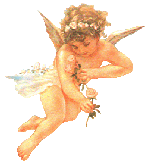The Life of Leonardo da Vinci, Italian Renaissance
Artist
 |
|
Self-Portrait of Leonardo da
Vinci
c. 1512; red chalk on
paper,
333 x 213 mm
Biblioteca Reale, Turin
|
|
Click
here to
see our fine art
reproductions.
|
Few men have inspired so much speculation in the world
of art over the past five hundred years as has the
quintessential Renaissance man, Italian Renaissance
artist, Leonardo da Vinci (1452-1519). Unique among
Italian Renaissance artists, art historians know da Vinci
as a multi-talented individual, a polymath, skilled as a painter,
draftsman, sculptor, architect, and engineer. The words
“scientist” and “thinker” should surely be added to that
list as well.
Popular still today, the paintings and drawings created
during the life of Leonardo da Vinci are often seen in art
prints and reproductions. Da Vinci’s study of human proportion,
Vitruvian
Man, graces the pages of books written in many fields,
a testament to the wide-reaching thoughts the image inspires
not only to Italian Renaissance art lovers, but to mankind as
well.
His art works attest to Leonardo da Vinci’s lifelong study
of man and nature. Like Italian Renaissance artist, Michelangelo, da
Vinci sometimes dissected corpses secretly to perfect his
understanding of anatomy and improve his fine art skills. He
also dissected animals, human dissection not being readily
available and strongly prohibited by the church during the time
of this Italian Renaissance artist. Da Vinci’s claim to be an
expert in military engineering and weapons may even have
offered opportunity for human study on the battlefield.
During the life of Leonardo da Vinci, patronage never seemed
to be lacking, although his patronwere not exclusively
interested in only sponsoring his art. According to
Giorgio Vasari, biographer and historian of many prominent
Italian Renaissance artists such as Michelangelo and
Raphael, da Vinci
was as much sought out for his wit and charm as for his mastery
of art painting. The city of Florence, where da Vinci spent his
early adulthood was a cultural maelstrom of craftsmen, artists,
and wealthy patrons. It is no surprise then that it was here
that so many Italian Renaissance artists arose. Leonardo
himself was apprenticed at a young age to master goldsmith and
sculptor Andrea Verrocchio.
Brenda Harness, Art Historian
- Leonardo da Vinci Timeline
Leonardo da Vinci Timeline - His Life and Works
- Da Vinci in Verrocchio's Studio
As a young man Leonardo da Vinci (1452-1519) was apprenticed to the studio of Italian Renaissance painter and sculptor, Andrea del Verrocchio. Da Vinci was a fast learner.
- The Annunciation to the Virgin, An Early fine Art Work by Leonardo da Vinci
This early fine art work by Italian Renaissance master Leonardo da Vinci gives us a glimpse of this great artist of the High Renaissance we have come to know so well.
- Da Vinci's Last Supper Painting
Leonardo da Vinci's Last Supper painting has been controversial since its exeution in 1498, not only due to Leonardo's experimental fresco technique which caused its deterioration.
- Da Vinci's Mona Lisa Portrait
The Mona Lisa portrait by Italian Renaissance artist Leonardo da Vinci was never delivered to a patron, but it eventually found its way into Napoleon's bedroom in the Tuileries.
- Where Is The Real Mona Lisa Now?
Italian scholar Giuseppe Pallatini believes he has found where the real Mona Lisa is buried, and he claims to know the exact location of the beautiful woman who modeled for Leonardo da Vinci.
- The Notebooks of Leonardo da Vinci
The original loose pages of the notebooks of Leonardo da Vinci are now bound and scattered throughout England, Italy, France, and America, separated into separate volumes.
- Da Vinci’s Vitruvian Man
Leonardo da Vinci’s Vitruvian Man drawing has inspired generations of artists.
- Da Vinci's Portrait of Ginevra de'Benci
Leonardo da Vinci's portrait of Ginevra de'Benci is the only work by the great artist in America.
- Stolen Art Still Missing: Leonardo's Madonna with the Yarnwinder
Stolen from a Scottish castle owned by the Duke of Buccleuch in 2003, Leonardo's Madonna with the Yarn Winder is one of the few autograph works of the artist.
- Da Vinci's Madonna and Child Painting with St. Anne
Leonardo da Vinci explored the theme of Madonna and Child painting several times throughout his long career.
- Leonardo's Bronze Horse Sculpture
Leonardo's Bronze Horse sculpture was commissioned by Ludovico Sforza, Duke of Milan, but never finished until today.
|
